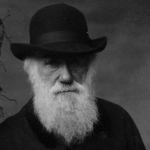Identity and the Law

17 साल
17.5K चेतावनी
वर्ग:
विवरण:
Although English law protected visual manifestation of trader’s identity (such as names, logos, marks and trade dress) as property from the late nineteenth century, it has been slower to provide protection to individuals against other people’s use of their name, appearance or voice, and has offered very little protection against unauthorised use of cultural symbols. In this paper, Lionel Bently will explain why the concepts of English law have proved so difficult to extend in these directions, and how matters are changing. Whereas Queen Victoria’s physician Sir James Clark, 1940s radio broadcaster `Uncle Mac’, 1950’s actor Alastair Sim and even 1990s pop group, the Spice Girls, failed in their efforts to control uses of their names, images and voices, English law has recently witnessed the protection of racing driver Eddie Irvine and Disc jockey `Diddy’ Dearlove against others wishing to use their names and images (while in the United States, substantial damages were awarded to singer Tom Waits when his gravely voice was imitated on a Frito-Lay advert.) The paper will examine the extent to which these changes amount to legal recognition of a person’s interest in their own identity (and its manifestations), and what kind of understanding of identity is being employed. The paper will also explore the extent to which such protection may have important implications for `identity’ more generally, and the prospects for further protection of manifestation of collective identity.


